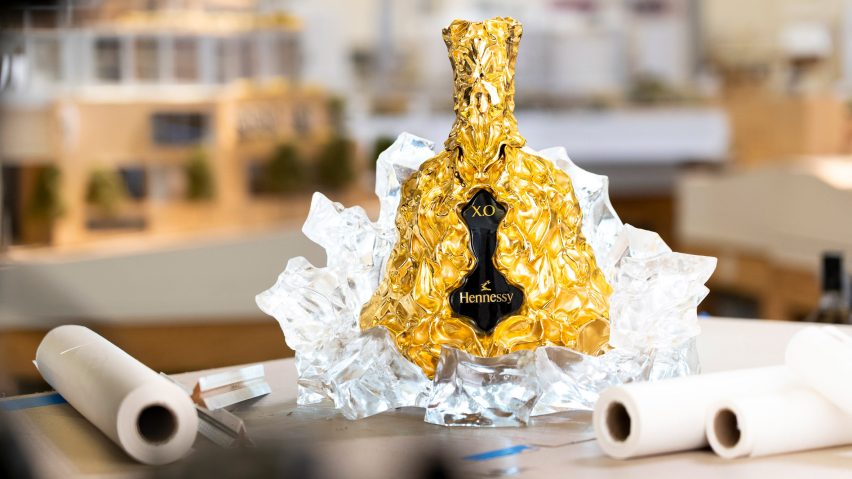
Frank Gehry forges crinkled gold bottle to mark 150th anniversary of Hennessy X.O
Pritzker Prize-winning architect Frank Gehry has created a limited-edition bottle for the 150th anniversary of drinks brand Hennessy's X.O cognac, which he hopes is unlike "anything people have seen before".
The handcrafted cover, which encases the distinctive shape of the Hennessy X.O bottle, was forged from 24-carat gold-dipped bronze to evoke feelings of drinking cognac and the process by which it is made.
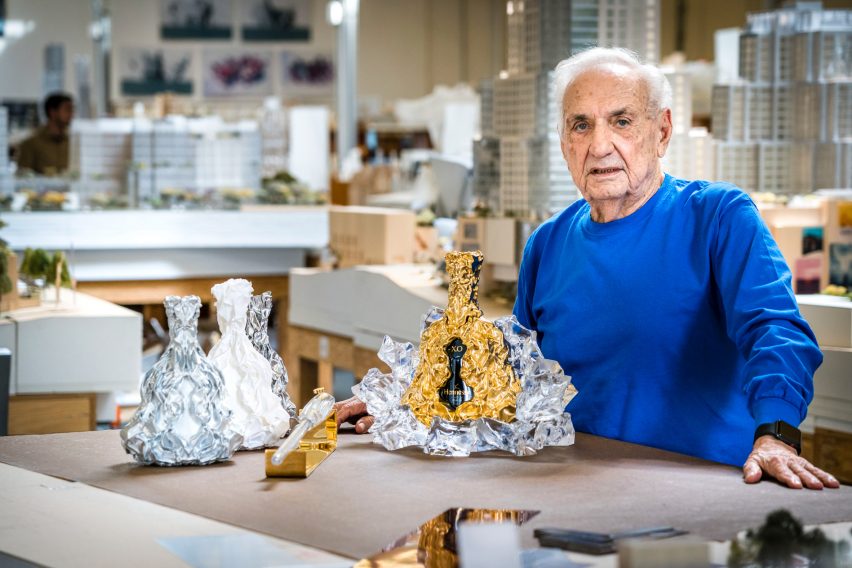
"I wanted to personify the hand-made quality of Hennessy X.O with a hand-made bottle – one that feels good to hold, catches the light beautifully, and one that expresses the hand of the artisans who helped make the cognac," Gehry told Dezeen.
"If you look at the Greek sculptures like the Charioteer in Delphi or the prize fighter, they are able to transmit feelings through thousands of years with inert materials," he continued.
"That was in my mind when we were doing this bottle. I wanted to make something that transmits feeling."
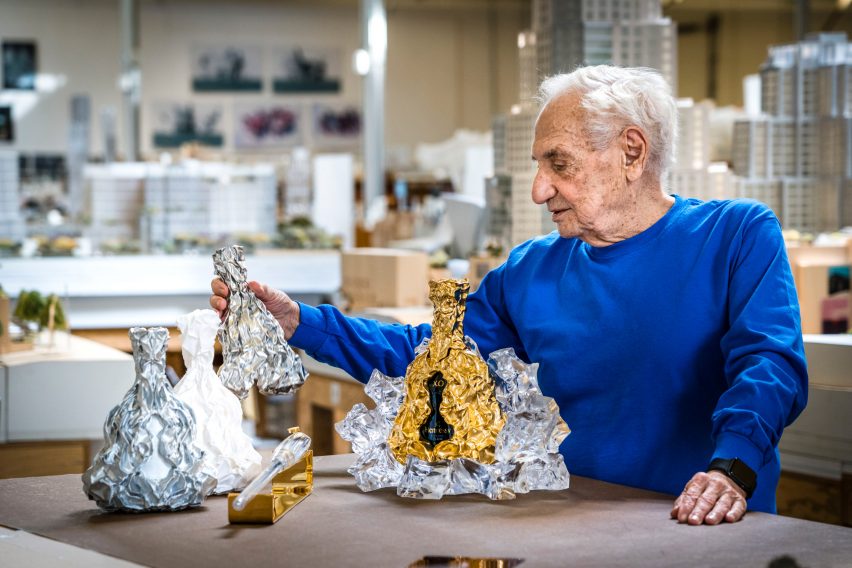
For the bottle's crinkled shape, Gehry looked to the water in the Charente River, which runs alongside the Hennessy distillery in the town of Cognac, west France.
He wanted the form to recall the light reflecting in the river, the craftsmanship that goes into creating the cognac and the drink's history.
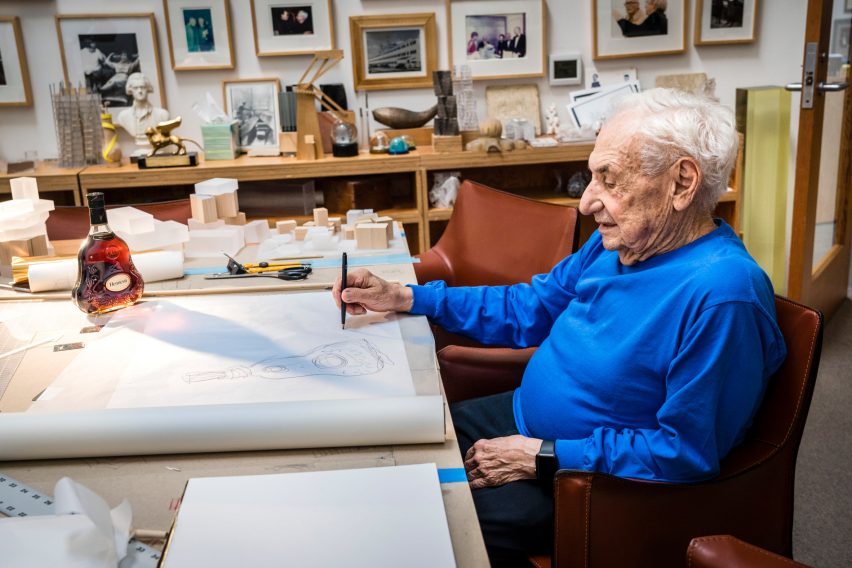
"The existing Hennessy bottle is iconic, so we wanted the new design to respect the history and the brand identity that came before us," Gehry explained.
"A big part of the history of Hennessy is the involvement of the family and the craftspeople that have committed their lives to making this the best product on the market. You feel this when you drink Hennessy," he continued.
"With this design, I wanted people to also feel the human hand by the craftspeople who made the bottle. I wanted to be respectful of the history, but different."
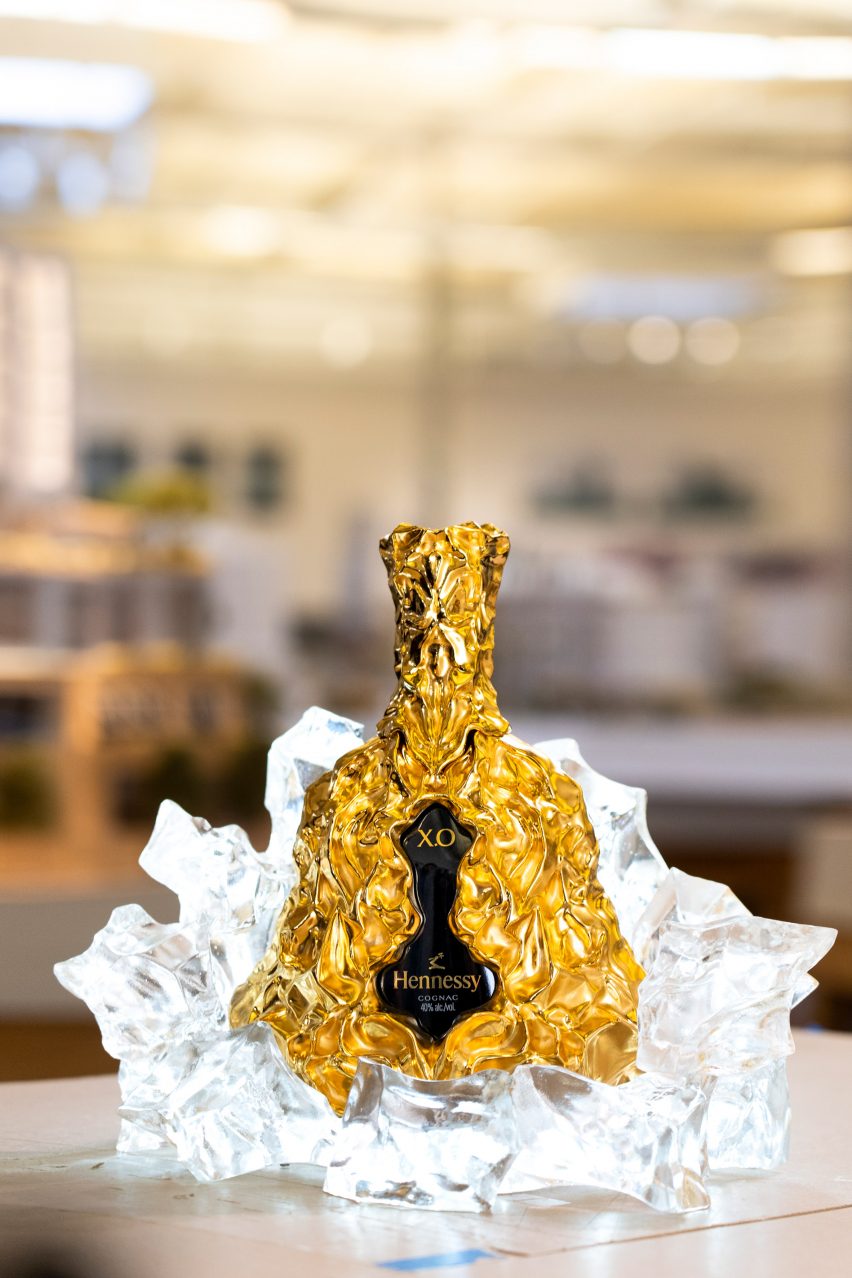
Gehry, who's best known for designing large public buildings including the Guggenheim Museum in Bilbao, Walt Disney Concert Hall in Los Angeles and Fondation Louis Vuitton in Paris, said he enjoyed working on a much smaller scale to create the bottle.
"I have been very fortunate to have collaborated with excellent craftspeople on these smaller-scale projects over the years, including this project," said Gehry.
"There is an intimacy to the scale that you don’t always get to explore in larger buildings. These smaller projects also have shorter schedules, so it's nice to design something and have it realised quickly."
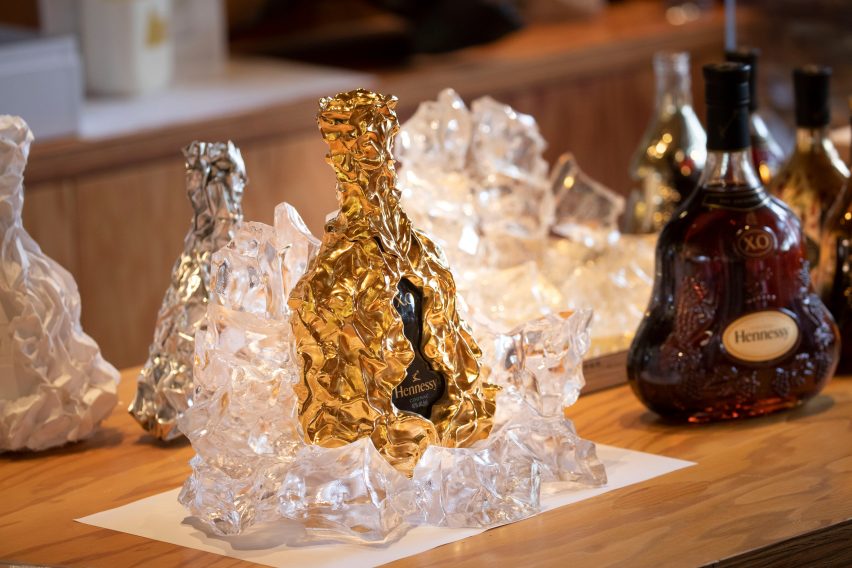
Although many of Gehry's buildings, including the stainless-steel clad Walt Disney Concert Hall, have a sleek appearance, this was not the aesthetic he deemed appropriate for the bottle.
"The Walt Disney Concert Hall has that persona for a reason," explained Gehry. "It is a civic building, and it, therefore, needed a certain level of iconicity in the city," he continued.
"Every building is different, as is every design project. They are the result of the time, place, client, budget and program. This project is a reflection of my relationship with Hennessy and the capabilities of many skilled hands that helped make it a reality."
When asked what buildings the bottle most resembled, he said: "That is for others to weigh in on. I hope that it doesn't look like anything that people have seen before."
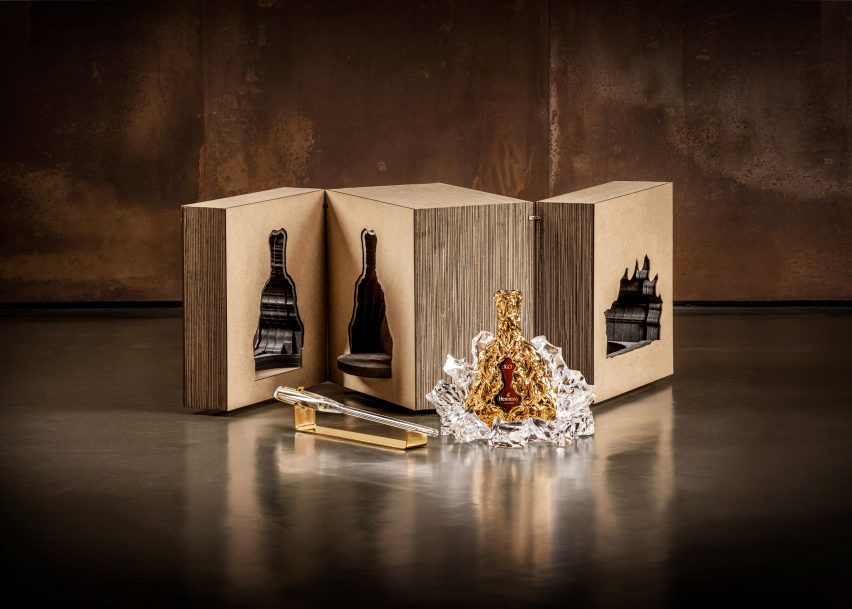
As well as the bottle, Gehry designed a crystal glorifier to display it and a fusil, which is used to taste a small quantity of the drink to test its quality, from brass and gold.
All of the items are packaged in a protective cardboard case that was created in homage to the corrugated-cardboard furniture that the architect designed in the 1970s.
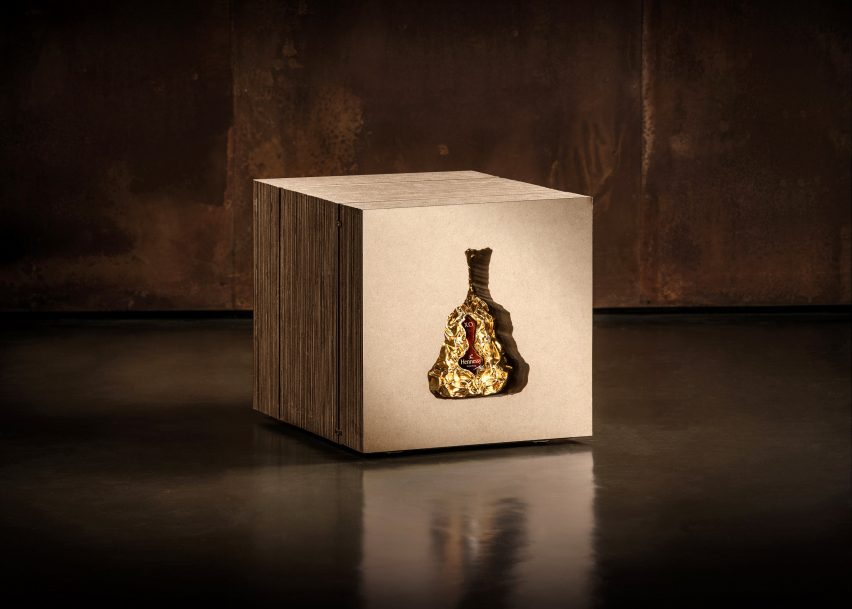
The Hennessy distillery was founded in 1765, with Hennessy X.O – the XO stands for extra old – first produced as a drink for the owner's family and friends in 1870.
Hennessy now forms part of luxury brand Louis Vuitton Moët-Hennessy, which also owns champaign label Moët and fashion brand Louis Vuitton.
Gehry previously worked for the conglomerate designing the Fondation Louis Vuitton in Paris, and believes that there are a lot of similarities between crafting buildings and making cognac.
"Both architecture and product design require a dedication to honing your craft," said Gehry. "I visited Cognac and met the team in charge of making the cognac."
"The gentleman I met was from the family that had been creating the liquid for over 100 years. He spoke very beautifully about his process, which requires a lot of research, a lot of dedication, a lot of work, and a reliance on feelings and intuition," he continued.
"These are the same traits that go into making architecture, so it's not really about applying an aesthetic, but letting the process unfold so that the client can participate in the process. At the end of the day, it has to satisfy their hopes, dreams, and realities."